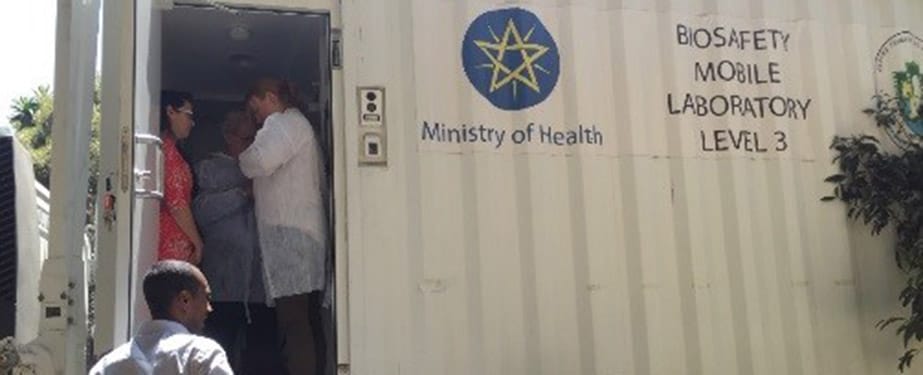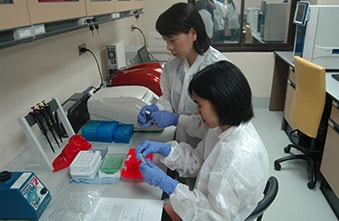Reducing the Risk of Bioterrorism and Laboratory Dangers
February 28, 2018

While working on a biorisk plan, biosafety and biosecurity experts in Ethiopia prepare to assess a BSL-3 mobile laboratory.
Public Health Threat:
We cannot effectively stop epidemics without critical information from labs. In an outbreak, laboratory testing can help quickly and accurately pinpoint the cause, monitor treatment, and guide the response.
In order to save lives, laboratory workers must sometimes handle dangerous pathogens – like the organisms that cause anthrax or plague – or deadly toxins like ricin. If accidentally or intentionally released, some pathogens could pose a severe threat to human and animal health, threatening both laboratory workers and their surrounding communities.
Response:

Lab workers in Thailand
Biosafety and security systems are how we minimize the risk of theft, loss, or mishandling of specimens used by laboratories as they conduct their lifesaving work.
To reduce the global risk of an accidental release from a lab or a bioterrorist threat, CDC helps its partner countries implement biosafety and biosecurity programs within laboratory networks. CDC experts offer technical assistance to laboratory networks by working with partner countries to make plans at the national level, as well as by conducting trainings to ensure laboratories operate safely and securely.
Impact:
CDC’s work is helping countries keep laboratories safe and secure as they handle the world’s most threatening pathogens. For example, in partnership with CDC and the U.S. Department of Defense, Ethiopia has embarked on a program of reducing the risk of an accidental or intentional release of hazardous biological materials. To help protect the citizens of Ethiopia, the region, and the international community, Ethiopia identified its most dangerous biological agents and toxins to create national requirements for all laboratories possessing, using, or transferring these hazardous materials.
In Southeast Asia, CDC’s Strengthening Laboratory Capacity Program in Thailand helps train workers who can certify laboratory biological safety cabinets (BSCs). BSCs protect both workers and the surrounding community when laboratories work with infectious materials. The Asia Pacific Biosafety Association found that many of BSCs tested in the region were poorly designed, installed incorrectly, not certified, or operated incorrectly. CDC supports critical programs that provide user training, as well as licensing of technicians who can certify BSCs within Asia and around the world. BSC certifiers across Southeast Asia play an important role in keeping laboratory workers and the public safe.